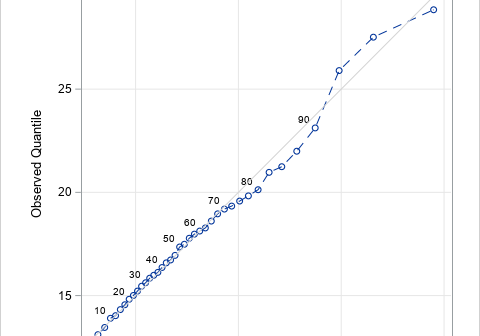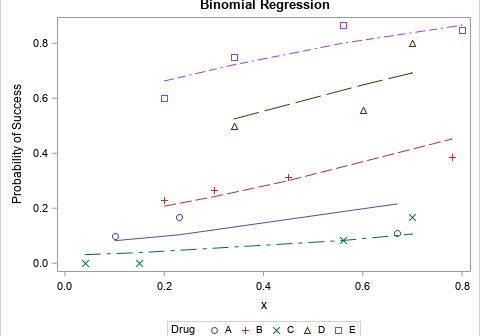The DO Loop
Statistical programming in SAS with an emphasis on SAS/IML programs
A common task in statistics is to model data by using a parametric probability distribution, such as the normal, lognormal, beta, or gamma distributions. There are many ways to assess how well the model fits the data, including graphical methods such as a Q-Q plot and formal statistical tests such

Every programmer makes errors. Therefore, learning to debug a program is an important part of learning to program. Another skill is learning to decipher cryptic error messages, which can be as hard to interpret as hieroglyphs. One helpful skill is learning to navigate a "traceback" error. A traceback error message

Happy Pi Day! Every year on March 14th (written 3/14 in the US), people in the mathematical sciences celebrate "all things pi-related" because 3.14 is the three-decimal approximation to π ≈ 3.14159265358979.... The purpose of this day is to have fun, celebrate the importance of mathematics, and maybe learn a

The first-order autoregressive (AR(1)) correlation structure is important for applications in time series modeling and for repeated measures analysis. The AR(1) model provides a simple situations where measurements (on the same subject) that are closer in time are correlated more strongly than measurements recorded far apart. The AR(1) model uses

In a binomial regression model, the response variable is the proportion of successes for a given number of trials. In SAS regression procedures, you specify a binomial model by using the EVENTS/TRIALS syntax on the MODEL statement. Many analysts use the LOGISTIC or GENMOD procedures to fit binomial models. Visualizing

Many people have an intuitive feel for residuals in least square models and know that the sum of squared residuals is a goodness-of-fit measure. Generalized linear regression models use a different but related idea, called deviance residuals. What are deviance residuals, and how can you compute them? Deviance residuals (and

